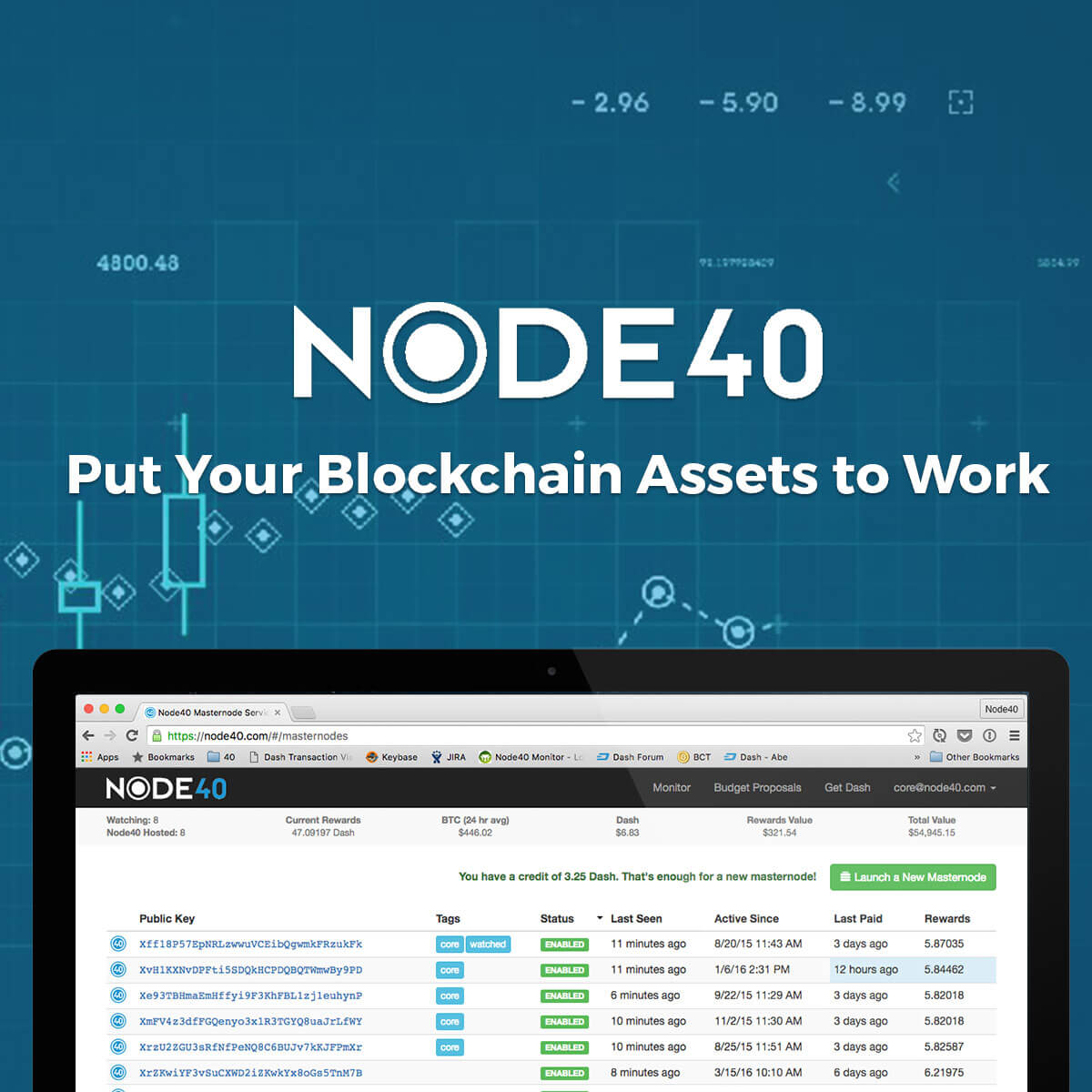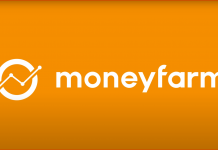
InvestItIn.com interviewed Perry Woodin co-founder of Node 40. We covered a host of questions focused on how investors can create a passive income from cryptocurrencies.
Mr Woodin’s startup helps its clients create a passive income from Dash. This cryptocurrency similar to Bitcoin but has some crucial additional functionality which gives it more utility than Bitcoin. The utility is a primary driver of value for cryptocurrencies. Node40
Node40 provides masternodes hosting services for its clients. Dash masternodes earn an income for their services they provide o with the Dash network.
This opportunity does not come without risks. As in all investments, one needs to perform in-depth due diligence, in order to understand the investment and it’s pros and cons. The value of Dash can go up as well as down as new currencies tend to be more volatile than established ones. In order to judge all the risks, one
In order to judge all the risks, one defintely needs to have an understanding of crypo currencies and how they derive their value. There are many competing alternative coins or alt coins, Dash is one amongst many. The market has voted Dash up because a team of developers and marketeres are constatnly marketing and improving it.
We thank Mr Woodin for sharing his knowledge about CryptoCurrencies and Dash.
How is Dash different from Bitcoin?
Dash is a fork of the Bitcoin codebase, so it has all of the base features that make Bitcoin such a fantastic digital currency. What makes Dash different is a two-tier infrastructure that allows for support of features that enhance the currency’s capabilities.
Dash’s second tier supports instant transactions through locking of inputs (What do you mean by locking inputs). These instant transactions allow Dash to compete with traditional payment processors like Visa.
The second tier is also responsible for ensuring fungibility of the currency by offering a way to silo every single transaction on the transparent blockchain.
And one of the most interesting aspects of Dash is that it is a self-funded project. With Dash, 10% of the block reward goes to a treasury. The operators of the second-tier infrastructure vote on how those treasury funds should be spent. To date, the treasury funds have been used to fund developer salaries, conference attendance, service integrations, public relations, and many other proposals.
What are locking inputs and why are they important in measuring the utility of a crypto-currency?
All digital currencies have inputs to a transaction. If I can going to pay 1 Bitcoin for a good or service, that 1 Bitcoin transaction will have multiple inputs. In the case of Bitcoin, a transaction is not secured until it is written to the blockchain by the miners. That is theoretically every 10 minutes. Prior to a transaction being written to the blockchain, the inputs to that transaction could be used in another transaction. This is the double-spend problem.
With Dash, the inputs are locked UNTIL the miners can write the transaction to the blockchain. Locking of inputs is nearly instantaneous and solves the problem of a double spend.
Think of this way. If I purchase a cup of coffee of $5 USD, I can use five $1 bills to complete the $5 transaction. The five $1 bills are the inputs to the transaction. As soon as I hand them over to the coffee shop owner, the inputs are essentially locked. In other words, I can’t spend those five $1 bills on something else. The coffee shop owner can then deposit the five $1 bills into a bank which has the affect of confirming the transaction.
What is the best way to accumulate 1000 Dash?
The best way is still through Bitcoin. While there are exchanges that offer Dash/fiat trading pairs, the best volume is still tied to the Dash/Bitcoin trading pairs.
What are the strongest drivers behind the growth of Dash in the future?
Usability and utility. Dash has developed an incredible foundation for future growth and is now starting to tackle the issue of usability. With the next version of Dash (called Evolution), the goal is to remove all of the barriers that intimidate users and prevent them from adopting digital currency today. Dash Evolution will focus on the user experience. It is going to look like banking, but will rival the likes of Apple Pay and Google Pay. The first phase? of Dash evolution is set to be launched on the Late 2017 or early 2018..
Usability would really be worthless without strong utility and it is utility that Dash has been focused on to date. As mentioned above, the ability to support instant transactions is an absolute necessity for adoption. Bitcoin is trying to tackle this problem with bolt-on solutions such as the lightning network. Dash has opted for protocol level support which is far more desirable because it remains fully decentralised. Off-chain options like the lightning network tend to rely on some central authority.
Investing in Dash
What is the role of Dash nodes in the network and how is it different than miners?
Second tier Dash nodes are called masternodes. They are full nodes in the sense that they contain a copy of the blockchain and broadcast messages through the network. What makes Dash masternode special is they are incentivized to run minimum requirements for support of the features that make Dash unique.
Dash masternodes differ from miners in that they do not compete to write blocks to the blockchain. Instead, masternodes support Dash InstantSend, PrivateSend and Treasury Proposals. As the network grows and new features are implemented, they can be run on the masternode network.
What are the added benefits of owning a node?
If you run a Dash masternode you are helping to support the network, just like if you run a Bitcoin node. The difference is that Dash pays node operators for providing the service of supporting the network. That means anybody running a Dash masternode is actually getting paid for the service their node is providing.
What is the current ROI of Dash nodes?
There are two ways to look at ROI for a Dash masternode.
The first is volume. Think of the available rewards as a pie. The more masternodes running to support the network, the smaller the slice of pie you receive. So the volume ROI is a function of how many masternodes are currently running. As of today, you can expect your volume to increase by ~8.6% per node annualized. That means if you start with 1,000 Dash, at the end of 12 months your projected volume would increase to 1,086.
You can also look at ROI from a valuation standpoint. Dash has seen some incredible valuation gains year over year. Add a valuation gain to the volume gain and you have a nice compounding effect on your ROI.
Do Dash masternode profits have a relation to the amount of transactions the network hosts?
They do, but the affect is negligible at this point. Transaction are split between the miners and masternode owners so as adoption of Dash increases, we should see the ROI increase.
In the past have you seen the number of Dash nodes drop or increase according to the DASH price?
The number of Dash masternodes has steadily increased since the feature was introduced in late 2014. There are of course times when the Dash valuation has tempted some to liquidate their investment, but I have been surprised at the long-term horizon of Dash masternode owners.
Why should an investor choose Node40 to run his Dash node?
We are the only full-service company in the space. In addition to hosting, Node40 provides financial performance metrics, masternode monitoring, and one-click voting for treasury proposals.
Depending upon your tax jurisdiction, you may also be able to deduct the Node40 service from from your taxable income.
Could you give an example of which jurisdictions would allow you to do this?
In the United States you can write off the service fees related to your investments. This really only works if people are using a company like ours because we pay income tax on the serviced fee we receive from our customers.
Node40 is also very accessible. We have full-time staff and can thus offer one on one support to any of our customers.
I should also mention that we will soon be releasing a digital currency accounting service. https://accounting.node40.com/ This new service will help people calculate accurate gains and losses for the digital currency investments. That means that evaluating performance against traditional assets will be much easier and reporting of tax liability will no longer be a burden.
Do you know of other coins which have income generating nodes and do you plan to offer your services to these coins in the future?
We are constantly evaluating new currencies that are incorporating an incentivized infrastructure model. We will soon announce a new node hosting services for a similar to Dash.
Do you have any advice for entrepreneurs aspiring to run a successful internet based service?
If you have a good idea, run with it. When we started Node40 in March of 2015, nobody could understand what we were doing because we were at the bleeding edge of technology. Don’t let others lack of understanding discourage you.
What are the strengths of your company and what are the “secrets” behind those strengths?
Our biggest strength is that my co-founder Sean Ryan and I can both come up with the big ideas and implement. We run into lots of entrepreneurs who have big ideas, but can’t execute because the cost of talented developers is out of reach. Up until the end of 2015, Sean and I did everything and bootstrapped our way to success. We now have other developer talent to help push us forward, but the first 18 months was two hard working software engineers working on a product that was needed by a market.
Additional notes from InvestItIn.com:
Although masternodes create a passive income in Dash, this passive income can easily be converted in Bitcoin on any exchange.
In order to find more about Dash you can visit : Dash.org. To discover the services offered by Node 40: visit https://www.Node40.com/
You can also follow regular Dash updates from Dash Detailed hosted by the mesmerising Amanda B. Johnson.










